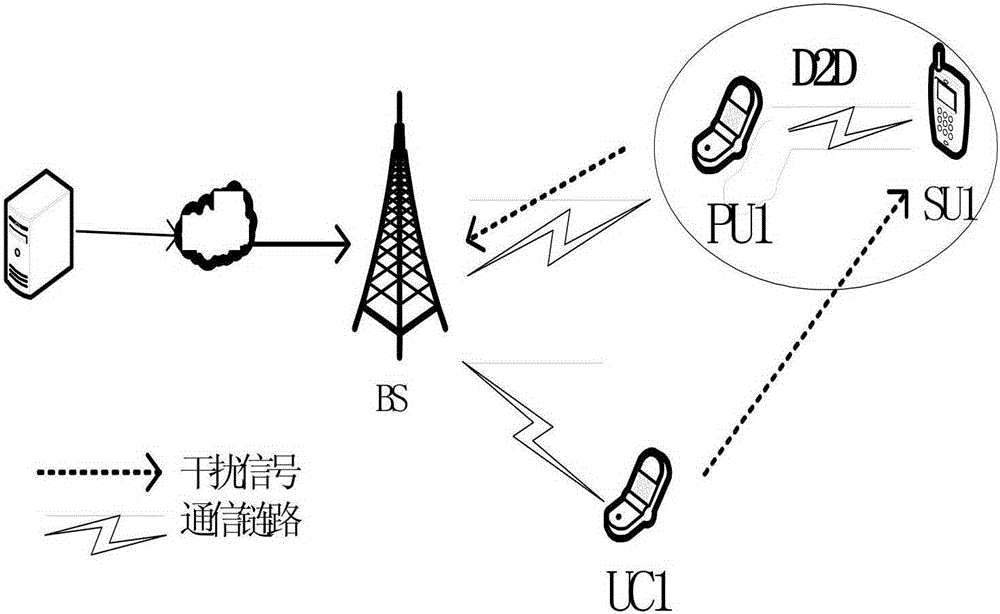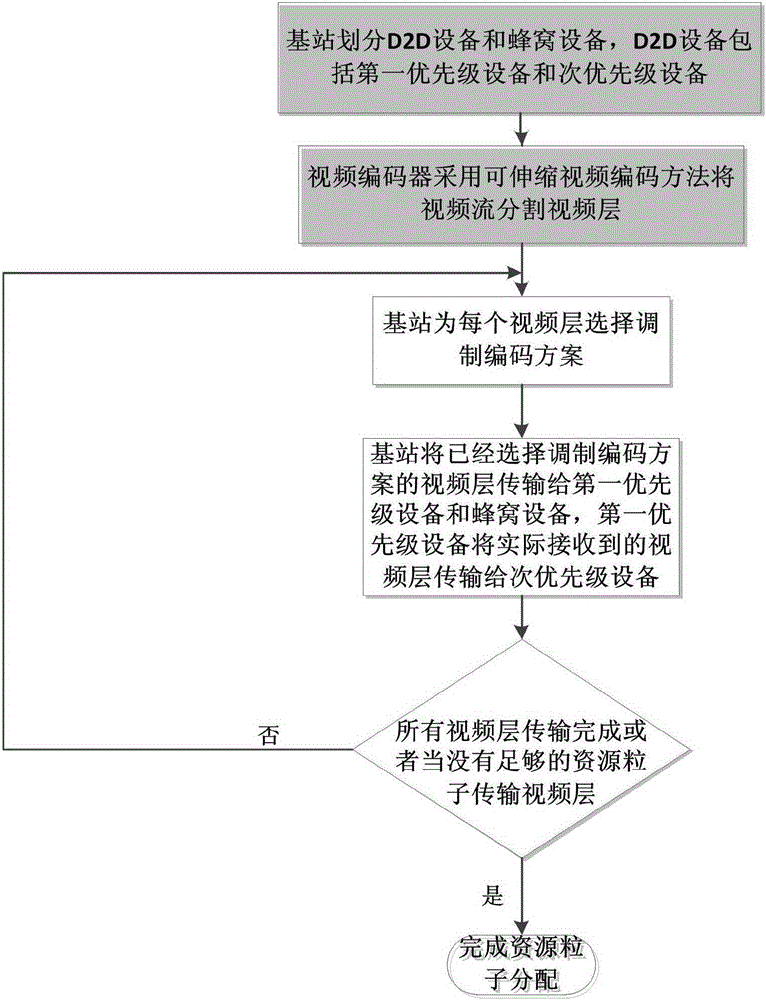Scalable video multicast resource allocation method based on D2D and cellular network
A resource allocation and cellular network technology, applied in the field of scalable video multicast resource allocation, can solve problems such as tension, achieve the effects of expanding equipment capacity, improving spectrum utilization, and improving overall performance
- Summary
- Abstract
- Description
- Claims
- Application Information
AI Technical Summary
Problems solved by technology
Method used
Image
Examples
Embodiment Construction
[0040] In this example, if figure 1 As shown, a scalable video multicast resource allocation method based on D2D and cellular networks is applied in a network environment composed of servers, base stations and X mobile devices. It is assumed that in the network environment, the base station wants to transmit video The stream s is given to X mobile devices, and each frame in the video stream s contains T number of resource particles. This method is when grouping D2D in a single cellular network environment, the first priority device of each D2D group (PrimaryusersPU), which directly communicates with the base station, and then directly forwards the received video stream data to the corresponding sub-priority device (SecondaryusersSU) of each D2D group. The base station performs scalability on the cellular device and each D2D device. For video multicast resource allocation, a greedy algorithm is used to select an appropriate modulation and coding method for each video layer unti...
PUM
 Login to View More
Login to View More Abstract
Description
Claims
Application Information
 Login to View More
Login to View More - R&D
- Intellectual Property
- Life Sciences
- Materials
- Tech Scout
- Unparalleled Data Quality
- Higher Quality Content
- 60% Fewer Hallucinations
Browse by: Latest US Patents, China's latest patents, Technical Efficacy Thesaurus, Application Domain, Technology Topic, Popular Technical Reports.
© 2025 PatSnap. All rights reserved.Legal|Privacy policy|Modern Slavery Act Transparency Statement|Sitemap|About US| Contact US: help@patsnap.com



